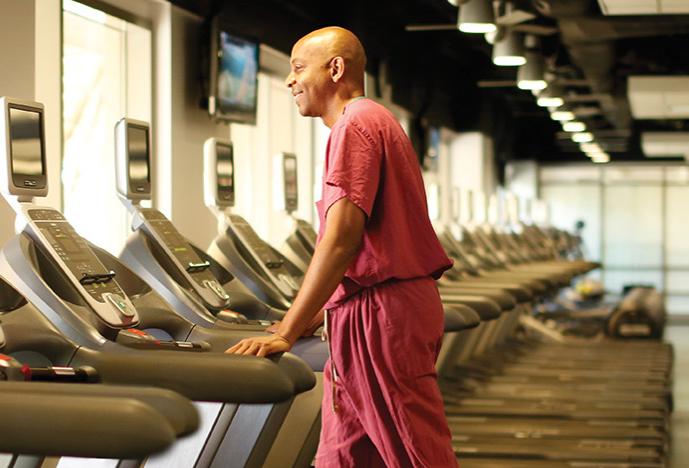No Skies, No Limits
Technology from the space program now aids medicine
- Profile

Robert Satcher
Tang. Teflon. Velcro. NASA spinoffs? Not a one.
Now try invisible braces, scratch-resistant lenses, ear thermometers, and memory foam. These and thousands of other successful, life-changing products have been developed from research funded and driven by NASA. And to those, add the more than 6,000 inventions and discoveries that the space agency has patented throughout its 50-plus years of innovation and exploration, and you have a small sense of what this massive endeavor has accomplished.
But simply tallying these innovations, or worse, billing NASA as the creator of Tang, misses the point. “It’s shortsighted,” says orthopedic surgeon and former astronaut Robert Satcher ’90. “We should just continue to explore. We cannot possibly anticipate the ideas that will come from that process. And those ideas will certainly revolutionize our lives.”
As a modern-day medical case in point, Satcher, now a surgical oncologist at The University of Texas MD Anderson Cancer Center, cites technology he uses daily: magnetic resonance imaging. In the mid-1960s, as NASA ramped up for the Apollo Lunar Landing Mission, engineers at the Jet Propulsion Laboratory at the California Institute of Technology needed to get a better look at the moon’s surface. So they devised digital image processing technology. Decades later, scientists applied that same technology to enhance images of the body’s internal organs, which eventually made possible the transformative diagnostic uses of MRI scans.
Since Apollo, space exploration has changed, most notably with the launch of the International Space Station. “The ISS is this phenomenal laboratory in orbit that supports a continued human presence in space,” says Satcher. “Without it, we wouldn’t have a reason—or a way—to ask and answer the kinds of questions we do.”
There wouldn’t be a reason, for example, to ask what happens to bone and muscle over time in a zero-gravity environment, a key question for astronauts on the anticipated long, zero-gravity journey to Mars. Without any intervention, astronauts lose bone density and muscle mass at a rate of more than 2 percent per month.
During his 2009 voyage into space, Satcher exercised on an antigravity treadmill and resistive exercise device in the space station’s gym to help prevent such deterioration. “The downside to that intervention is that you must design a ship large enough to carry the equipment,” says Satcher. “So the aim now is to develop drugs or biologically active agents that produce the same results as physical exercise.”
Such discoveries translate immediately to clinical medicine. The anti-gravity treadmill, another NASA-based advance, now helps injured patients, such as athletes with joint injuries, recover faster. And certainly, a bone- or muscle-building pharmaceutical agent would be valuable to patients with wasting disorders.
Satcher’s voice betrays his excitement over the prospects of a future NASA asteroid mission, followed by a journey to Mars. But the grounding of the shuttle program has temporarily grounded him, too. “I’m too big to fit into a Russian ship, but if the opportunity arises, I’ll definitely go into space again,” he says. “We’ll see what the future holds.”
Image: F. Carter Smith